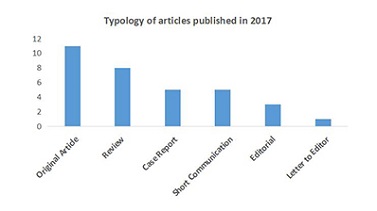Special Interview with Prof. Thomas R. Porter: A Leading Authority in Cardiovascular Ultrasound
From May 29 to June 1, 2025, the 19th Oriental Congress of Cardiology (OCC 2025) was held in Shanghai, China, bringing together top cardiovascular specialists from around the world.
Among the many highlights of this year’s congress, Prof. Thomas R. Porter from the University of Nebraska Medical Center (UNMC), a leading authority in cardiovascular ultrasound, delivered a compelling presentation on contrast echocardiography-guided sonothrombolysis, showcasing how this novel approach could revolutionize treatment for patients with acute coronary syndromes. During the conference, the Editorial Office of Vessel Plus had the honor of conducting an exclusive interview with Prof. Porter to explore the future of ultrasound-based therapies and imaging innovations.
Q&A Highlights
1. Your recent presentation focused on contrast echocardiography-guided sonothrombolysis for improving microvascular outcomes in acute coronary syndromes. Could you elaborate on how this technique works and what makes it a potential game-changer in clinical practice?
Prof. Porter explained that contrast echocardiography-guided sonothrombolysis represents an innovative extension of diagnostic ultrasound into therapeutic applications. The technique involves delivering intermittent high mechanical index impulses to disrupt microbubbles within the microcirculation, thereby enhancing blood flow in targeted myocardial regions. This approach is particularly beneficial in cases of acute myocardial infarction, where angiographically successful PCI may still leave residual microvascular obstruction. It marks a paradigm shift—transforming a diagnostic modality into a therapeutic tool to actively restore microvascular perfusion.
2. What are the current limitations or challenges in implementing contrast-enhanced ultrasound and sonothrombolysis in routine cardiovascular care, especially in acute settings?
Despite compelling evidence from multicenter studies demonstrating the safety and efficacy of ultrasound contrast agents in acute care, Prof. Porter emphasized that their use remains significantly underutilized worldwide. Studies have shown that administering contrast agents within 48 hours to critically ill patients improves outcomes. The main challenges lie in education and training—ensuring that clinicians are well-versed in using contrast agents and that this knowledge is incorporated into cardiology fellowship programs to normalize their use in critical care.
3. During Cardiovascular Imaging Forum - Session 1: The Feng Xie & Thomas Porter Contrast Echocardiography Promotion & Application Award Finalists, you served as a summary guest. What innovations or trends in contrast imaging impressed you most among the finalists?
Reflecting on the “Feng Xie & Thomas Porter Contrast Echocardiography Promotion & Application Award” finalists, Prof. Porter praised the creativity and clinical potential demonstrated by the young investigators. The winning presentation showed how contrast ultrasound can identify the culprit vessel in non-ST-elevation myocardial infarction (NSTEMI), guiding decisions and evaluating responses. Other finalists explored novel applications, including the detection of myocardial bridging, perfusion defects in hypertrophic cardiomyopathy, and risk stratification of microvascular obstruction—showcasing a vibrant pipeline of innovation in the field.
4. In your opinion, how has the field of cardiovascular ultrasound evolved in the past decade, and where do you see the most exciting developments in the near future?
According to Prof. Porter, the future of cardiovascular ultrasound lies in its ability to simultaneously assess myocardial perfusion and wall motion at the bedside— something that MRI and nuclear imaging cannot currently achieve in real time. He foresees exciting developments in 3D imaging, strain analysis, and especially AI-enhanced contrast echocardiography. By applying deep learning to large datasets, AI can enable automated perfusion analysis, paving the way for real-time coronary disease detection and therapeutic monitoring at the point of care.
5. What role do you foresee for contrast echocardiography in expanding access to high-quality cardiovascular diagnostics, especially in low-resource or remote settings?
Prof. Porter underscored the significant value of contrast echocardiography in resource-limited and remote healthcare environments, where advanced imaging modalities such as MRI, CT, or nuclear imaging are often unavailable. With portable ultrasound systems and contrast agents, clinicians can perform real-time assessments of myocardial perfusion and wall motion—providing a practical solution for cardiovascular diagnostics. This approach has the potential to transform care delivery and improve health equity by enabling advanced decision-making in underserved communities worldwide.
Prof. Porter’s insights underscore a pivotal shift in cardiovascular imaging—one that blends diagnostic precision, therapeutic potential, and global accessibility. As contrast echocardiography continues to evolve, it holds the promise of reshaping cardiovascular care on a global scale.
Brief Introduction

Prof. Thomas R. Porter, MD, is a globally recognized leader in cardiovascular ultrasound and contrast echocardiography. He holds the Theodore F. Hubbard Distinguished Chair of Cardiology at the University of Nebraska Medical Center (UNMC), where he also serves as Director of Cardiac Imaging. With a career spanning over three decades, Prof. Porter has been instrumental in advancing contrast-enhanced ultrasound for both diagnostic and therapeutic applications, including sonothrombolysis to improve microvascular perfusion in acute myocardial infarction.
He has published extensively on myocardial perfusion imaging, ultrasound-enhancing agents, and innovative uses of echocardiography in critical care. A passionate educator and mentor, Prof. Porter has played a key role in promoting the global adoption of contrast echocardiography through research, lectures, and international collaborations. His work continues to shape the future of non-invasive cardiovascular imaging and expand access to life-saving diagnostics worldwide.
Editor: Ada Chen
Language Editor: Catherine Yang
Production Editor: Ting Xu
Respectfully submitted by the Editorial Office of Vessel Plus









